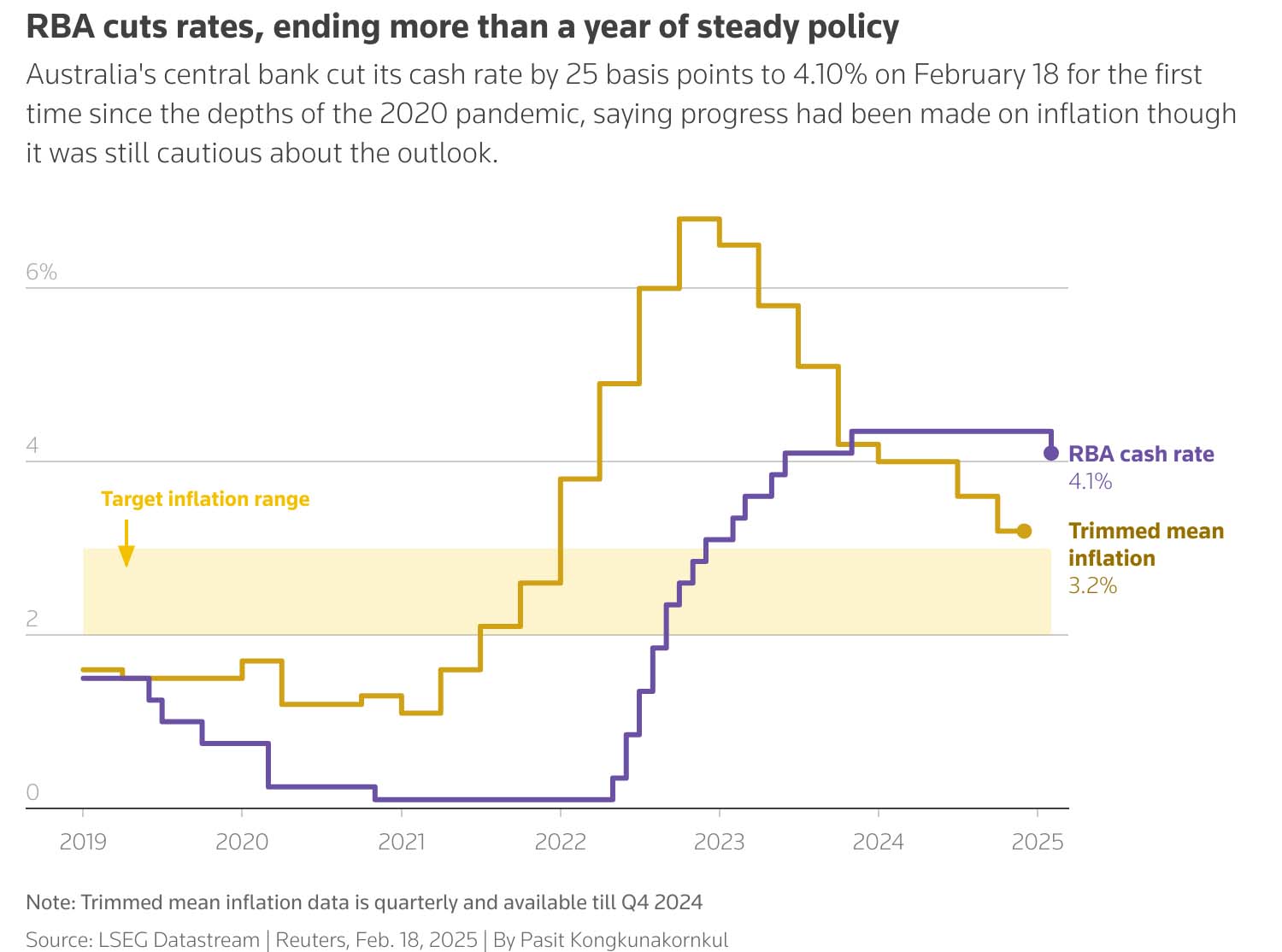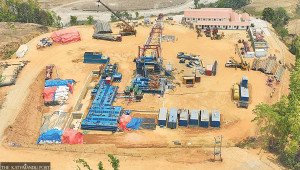World
Australia’s central bank cuts rates, cautious on further easing
The rate cut will provide some relief to borrowers and comes as good news for Prime Minister Anthony Albanese, who is facing a tough election to be held no later than May 17.
Reuters
Australia’s central bank cut rates for the first time in more than four years on Tuesday but warned it was too early to declare victory over inflation and was cautious about the prospects of further easing.
The rate cut will provide some relief to borrowers and comes as good news for Prime Minister Anthony Albanese, who is facing a tough election to be held no later than May 17. Speculation is growing that he may use the opportunity to call an early election.
Wrapping up its February policy meeting, the Reserve Bank of Australia (RBA) cut the cash rate by a quarter-point to 4.1%, the first reduction since November 2020 when the pandemic crisis saw rates slashed to an all-time low of 0.1%.
Markets had wagered heavily on a quarter-point cut after core inflation surprised to the downside in the fourth quarter at 3.2%. Swaps imply just an 18% probability for a follow-up cut in April, although a move in May is still almost fully priced in.
“While today’s policy decision recognises the welcome progress on inflation, the Board remains cautious on prospects for further policy easing,” the board said in a statement, noting that upside risks to inflation remain due to a strong labour market.
“The Board’s assessment is that monetary policy has been restrictive and will remain so after this reduction in the cash rate.”
The Australian dollar was off 0.1% at $0.6352, while three-year bond futures fell 5 ticks to 96.08 as Governor Michele Bullock pushed back on market pricing of two more rate cuts this year in her press conference.
“I want to be very clear that today’s decision does not imply that future rate cuts along the lines suggested by the market are coming,” said Bullock, who later described market pricing as “unrealistic”.
“The board needs more data that inflation is continuing to decline before making decisions about the future.”
Having already opened the door to a cut in December, the board warned that disinflation could stall if monetary policy was eased too much too soon.

LATE COMER
The RBA has lagged its peers in the global easing cycle and Australia’s cut comes as the Federal Reserve appears to be pausing its policy loosening.
Across the Tasman Sea, New Zealand is poised to go with another 50-basis point cut on Wednesday.
Inflation, which took off in Australia later than elsewhere, ran at 2.4% in the last quarter, back in the target band of 2-3%. The closely watched trimmed mean measure also slowed to 3.2%, from 3.6% previously, and is now expected to fall to 2.7% by June and stay there until mid-2027.
“The 25bp reduction in the cash rate to 4.10% is more akin to easing pressure on the economic brake rather than tapping on the accelerator,” said Gareth Aird, head of Australian economics at the Commonwealth Bank of Australia.
“The low level of the unemployment rate means the RBA can move slowly in normalising the cash rate,” said Aird, although he did add a follow-up 25 bp reduction in April cannot be ruled out if labour market deteriorates.
Indeed, the central bank is still concerned about inflationary pressures from a surprisingly strong labour market where the jobless rate hovered at 4.0% in December and is only expected to tick up to 4.2%.
Consumer spending has picked up thanks to the government’s tax cuts while growth for public spending has been revised up by the bank, all of which suggests the economy is not screaming for consecutive rate cuts.
Tuesday’s rate cut is also positive for the housing market where prices have actually fallen from their record levels over the past few months, but affordability issues are still a major headache for Prime Minister Albanese.
Australian “Big Four” lenders all cut their interest rates by 25 basis points, in tandem with the central bank.
Treasurer Jim Chalmers said the cut was a “welcome step” in providing better relief for Australians.
“This is the soft landing we have been planning for and preparing for but we know there’s more work to do,” he told a press conference.
Capital Economics senior APAC economist Abhijit Surya expects the RBA will only cut rates twice more in the current easing cycle.
“Taken together with the RBA’s continued expectation for a recovery in household consumption, and activity more broadly, the Bank believes that some upward pressures on inflation are likely to persist into the medium term,” Surya said.




 25.29°C Kathmandu
25.29°C Kathmandu














